Biomass Resources: What is considered a biomass resource?
Biomass is a term that refers to a wide range of organic matter that can be used as an energy source. It can be plant-based or animal-based, and it is frequently a byproduct or waste product of other processes.
The most common biomass resources are wood, crops, municipal solid waste, and landfill gas. The only requirement for something to be considered a biomass resource is that it be converted into energy on a renewable basis.
For example, municipal solid waste is a biomass resource because it can be burned to generate electricity. This process is considered renewable because the waste would otherwise end up in a landfill, and incineration reduces waste volume by up to 90%.
Landfill gas also qualifies as a biomass resource because it can be burned to produce heat or electricity. This gas is created when organic matter decomposes in a landfill, and it typically contains methane which contributes to climate change.
By burning methane that would otherwise be released into the atmosphere, its environmental impact is reduced.
In this post, we want to discuss the different types of biomass resources and how they can be used to generate energy. Here are the most common biomass resources:
Food waste
Food waste is an excellent source of agricultural biofuels. The Food and Drug Administration (FDA) estimates that the United States discards 30 – 40% of the food produced.
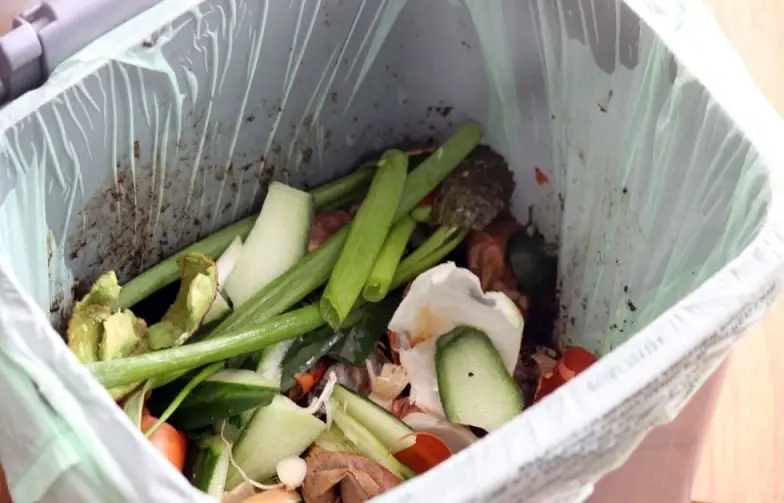
This wasted food ends up in landfills where it decomposes and emits methane, a potent greenhouse gas mainly methane. Using the food that could otherwise be wasted is a great way to reduce methane emissions and generate renewable energy at the same time.
In an effort to reduce wasted food, some dairy farmers in the US are already using anaerobic digesters to turn food waste into energy.
Anaerobic digestion is a process that breaks down organic matter in the absence of oxygen. This process produces methane, which can be used to generate electricity or heat.
In many situations, digesters can absorb a wide range of waste streams including manure, food waste, and crop residues. The methane produced by anaerobic digestion can be used to generate power on-site or sold to the grid.
By using anaerobic digestion, dairy farmers are able to reduce their reliance on fossil fuels, lower their carbon footprint, and generate income from the sale of methane.
Some dairy farmers in the United States have even started programs to collect uneaten food from supermarkets and feed it to their digesters, capitalizing on the massive amounts of food that supermarkets throw away each year.
Agricultural Crops
Agricultural crop residue is the part of the crop that is left after the grain or edible portion has been harvested. Crop residues can be used as biomass feedstocks if they are not needed for a more useful job like feeding animals.
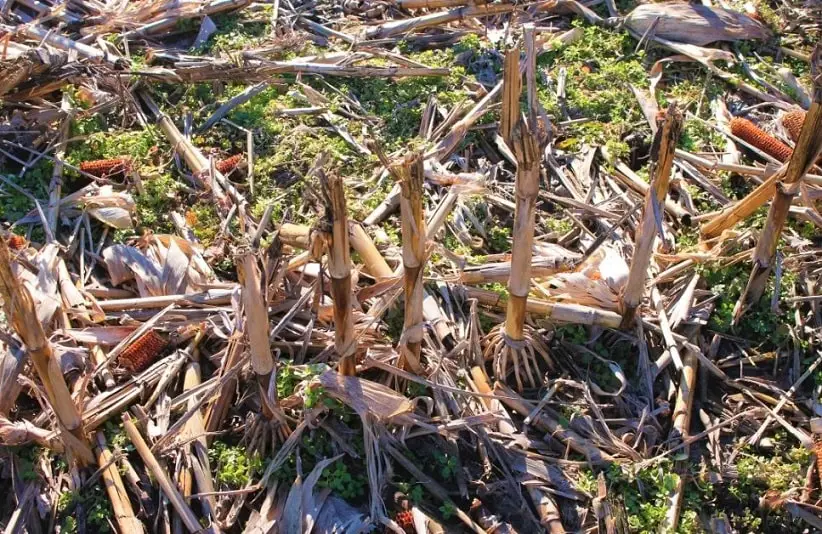
Agricultural biomass is a broad category of biomass-derived from agriculture, which includes the following:
- Crops like corn, sugarcane, and beets
- Oilseeds such as rapeseed, sunflower seed, and soybeans
- Agricultural residues
Agricultural residues listed above consist of:
- Herbaceous crop residues such as cereal straw, corn stover, and rice straw
- Permanent crop residues, such as orchard prunings and plantation removal of wood
- Agricultural and Agri byproducts such as olive cake, grape marc, and sunflower husks
- Leguminous crops
- Grassy and woody energy crops
Agricultural residues are classified as either primary or secondary based on their origin. Primary residues are solid vegetal residues that remain in the field following harvest or pruning, as well as manure.
Secondary residues are the leftovers from the processing procedure (olive pits, nut shelling, etc). They positively contribute to rural development by providing a source of income for farmers, and when utilized as a bioenergy feedstock, they help to mitigate climate change.
Forestry residues
Forest biomass feedstocks are either forest wastes left after logging (limbs, tops, and culled trees) or whole-tree biomass harvested specifically for biomass. After timber harvest, dead, sick, poorly shaped, and other unmarketable trees are left.
| Forest Residue | Description | Advantages | Disadvantages |
|---|---|---|---|
| Logging residues | Limbs, tops, and branches left after logging | Reduces waste and improves forest health | Can be difficult to collect and transport |
| Cull trees | Trees that are dead, diseased, or poorly shaped | Provides additional income for forest owners | May have lower energy content than other feedstocks |
| Thinnings | Trees removed to improve forest health and growth | Reduces fire and pest risks and improves forest productivity | Requires additional resources for harvesting and transportation |
| Slash | Woody debris left after logging and forest management | Reduces waste and improves forest health | May be contaminated with dirt and rocks, making it difficult to use |
| Harvested whole trees | Trees harvested specifically for biomass | High energy content and reliable supply | May negatively impact forest biodiversity and health if not managed properly |
This woody debris can be used for bioenergy while still providing habitat and maintaining nutritional and hydrologic aspects. Millions of acres of forests may have extra biomass.
Harvesting extra woody biomass reduces fire and pest risks and boosts forest productivity, vitality, and resilience. This biomass could be harvested for bioenergy without affecting forest health and stability.
Manure
Manure is another agricultural byproduct that can be used as a biomass feedstock. It is rich in nutrients and organic matter, making it an excellent fertilizer.
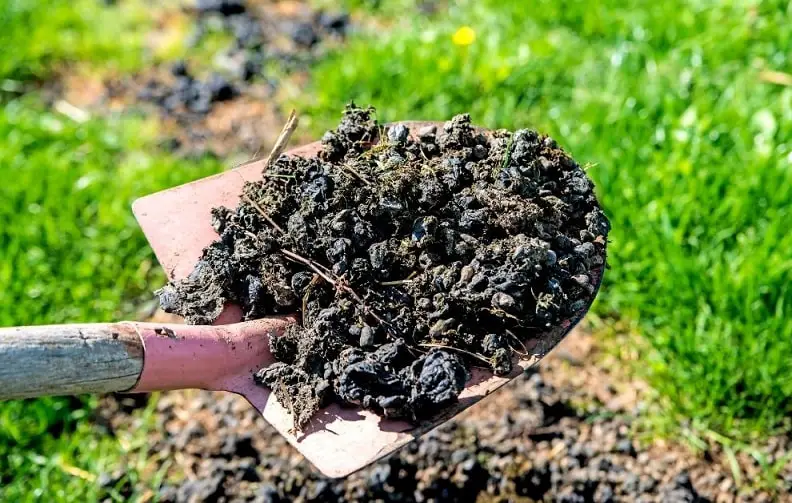
Texas Agricultural Experiment Station (TAES) and Texas Cooperative Extension (TCE) field studies have calculated the heating value of manure at 8,500 Btu/lb on a dry ash-free basis (DAF).
This heating value is used as the energy input into the conversion process when manure is to be converted to energy.
| Type of Manure | Methane Production Potential (ft3/lb) | Biogas Production Potential (m3/ton) |
|---|---|---|
| Dairy cow manure | 0.15 – 0.35 | 100 – 300 |
| Pig manure | 0.35 – 0.5 | 300 – 400 |
| Poultry manure | 0.04 – 0.15 | 30 – 100 |
| Horse manure | 0.1 – 0.35 | 70 – 300 |
| Human waste (sewage sludge) | 0.15 – 0.25 | 150 – 250 |
Using microorganisms to produce methane (a byproduct of the biological process) or heat at high temperatures with or without air or oxidants, manure could be turned into useful energy and fuel (a thermo-chemical process).
In order to produce methane from manure, anaerobic digestion is used. This process involves breaking down the organic matter in manure in the absence of oxygen to produce methane. The methane can then be used to generate electricity or heat.
Biogas is mostly composed of methane (CH4) and carbon dioxide (CO2), and it is formed by bacteria degrading organic waste in manure (CO2). Also present in modest amounts are nitrogen (N2), hydrogen sulfide (H2S), and trace organic components.
Approximately 60% to 65% of the biogas produced is CH4. More than 90% of the biogas is composed of methane and CO2. The digested manure retains nearly all of its nitrogen (N), phosphorous (P), and potassium (K) content.
Energy production through anaerobic digestion minimizes the natural emission of methane, which has a far bigger global warming potential than CO2 emissions. For a particular quantity of biogas containing 65% CH4, the heating value is roughly 600 BTU/ft3.
As you will remember, British Thermal Unit (BTU) is the heat needed to elevate 1 lb. of water 1°F and BTU = 252 calories.
To give an example, 1,000 ft3 of biogas containing 65% CH4 has roughly the same energy content as 600 ft3 of natural gas, 6.6 gals of propane, and 4.7 gals of gasoline.
There are many other benefits to using manure as a biomass feedstock. These include reducing odor, pathogens, and fly problems associated with manure storage, while also providing a source of renewable energy.
Wet waste
Wet waste is any organic matter that contains a high percentage of water. It can come from food processing, animal rendering, or municipal solid waste.
Wet waste generally has a lower energy content than dry biomass because of the water content. However, it can still be used to produce energy.
For a biomass feedstock to qualify as wet waste, its moisture content should be above 0.8 kg/kg-wet. This threshold is calculated by comparing water evaporation heat with biomass heating value.
When the moisture level is above 0.8 kg/kg-wet, the energy required to evaporate the water is more than the available energy in the biomass. This makes it uneconomical to use wet waste as fuel.
However, there are some technologies that can be used to convert wet waste into biomass fuel. These include anaerobic digestion, fermentation, and pyrolysis. Some of the great examples of wet waste are algae, sewage sludge, and certain food waste.
Algae as biofuels include microalgae, macroalgae (seaweed), and cyanobacteria (previously called “blue-green algae”). Many use sunshine and nutrients to build biomass that may be turned into biofuels and other products.
Depending on the strain, algae can grow on the fresh, salty, or brackish surfaces, ground, or seawater.
Also, they can grow in treated industrial wastewater, municipal, agricultural, or aquaculture wastewater, or produced water from oil and gas drilling.
Wood and wood waste
Wood is solid biomass that can be used for energy. It has a high carbon content and is renewable considering that it is derived using sustainable forestry practices.
Wood waste is any solid organic matter that is derived from wood. It can come from sawmills, construction, and demolition.
Some of the great examples of wood-based biomass are sawdust, wood chips, and bark, construction & demolition of wood debris, forest residues, landscaping trimmings, and paper mill sludge.

Wood-based biomass generally has a high energy content and low moisture content. This makes it a good choice for fuel. Wood-based biomass can be used to produce energy through combustion, gasification, and pyrolysis.
Landfill gas
Landfill gas is also known as biogas a type of biogas that is produced by decomposition or thermochemical conversion of biomass. The process occurs in the absence of oxygen, which is why it is also called anaerobic digestion.
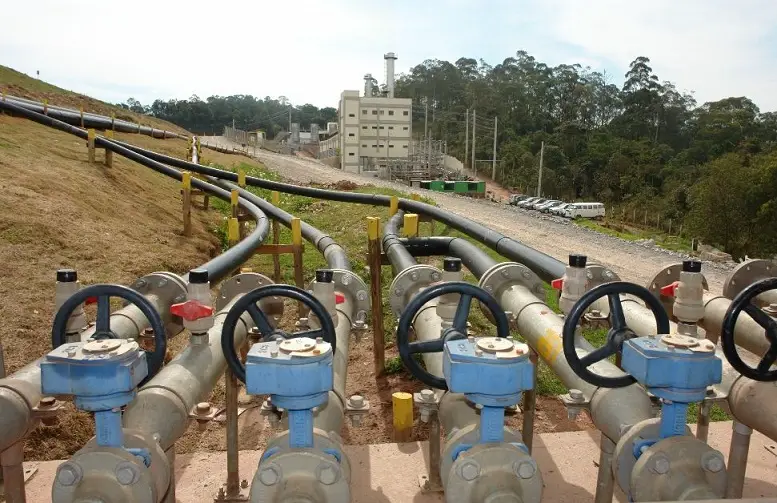
When the organic matter decomposes it produces approximately 50-60% methane and 40-50% carbon dioxide. It also creates CO2, water vapor, and other trace gases.
Landfill gas can be used as-is or processed to remove CO2 and other gases similar to natural gas.
Landfill gas is typically concentrated in the areas with the highest organic waste density. The gas migrates through the landfill and is collected using a series of pipes. The gas is then transported to a central point where it can be used or processed.
Processing landfill gas typically involves removing CO and other contaminants to produce a methane-rich gas that can be used as fuel. The methane in the gas can also be used to generate electricity or heat.
One great benefit of using landfill gas is that it can help reduce greenhouse gas emissions. Because the gas naturally occurs when organic matter decomposes, using it as fuel can help release fewer greenhouse gases into the atmosphere.
Another benefit is that it can help extend the life of a landfill. By using the gas, there is less organic matter available to decompose, which can help extend the life of the landfill.
Landfills, if not properly managed, can result in tragic accidents due to the compression of methane gas. By utilizing this methane gas, we can not only reduce greenhouse gas emissions but also help to extend the life and security of landfills.
Dedicated Energy Crops
Dedicated energy crops are non-food crops that are grown for the specific purpose of being used as biomass feedstock. These crops are usually more efficient at converting solar energy into biomass than food crops.
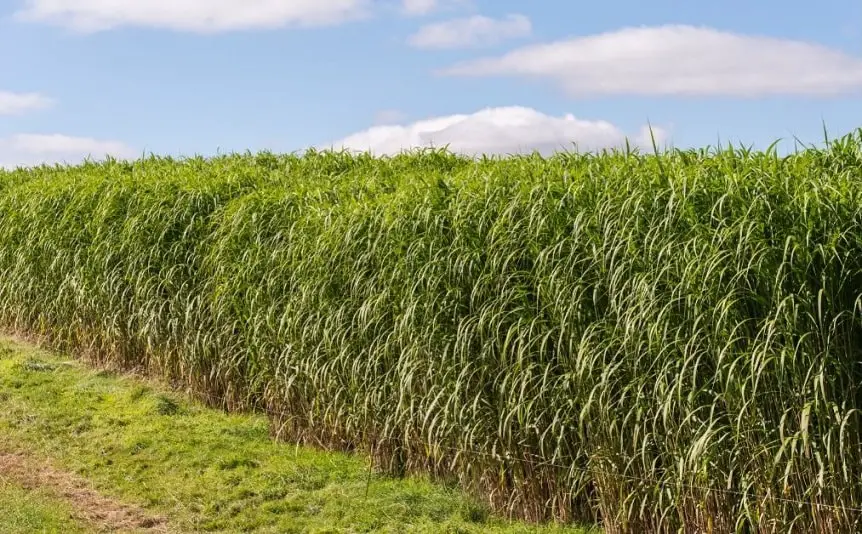
Dedicated energy crops are planted on marginal land that is not suitable for food crops and can be harvested more frequently than food crops.
There are two types of dedicated energy crops:
Short-rotation woody crops (SRWC): Short-rotation woody crops (SRWC) are a type of woody biomass that can be grown and harvested within a relatively short time frame, typically 2-5 years.
These crops are typically grown in rows, like agricultural crops, and can be harvested using specialized equipment.
SRWCs have a high biomass yield and can be used for various applications, such as biomass energy production, pulp and paper, biofuels, and bioproducts. The choice of the crop will depend on factors such as climate, soil type, and intended use.
| Short-rotation Woody Crops (SRWC) | Characteristics | Potential Uses |
|---|---|---|
| Poplar | Fast-growing, adaptable to different soil types, and has high biomass yield. | Biomass energy production, pulp and paper, biofuels, and bioproducts. |
| Willow | Fast-growing, low-maintenance, and can tolerate a wide range of soil conditions. | Biomass energy production, phytoremediation, animal feed, and bioproducts. |
| Eucalyptus | Rapid growth, high biomass yield, and can grow in subtropical and tropical climates. | Biomass energy production, pulp and paper, biofuels, and bioproducts. |
| Hybrid Aspen | Fast-growing, can tolerate cold climates, and has a high yield of low-lignin wood. | Biomass energy production, pulp and paper, and bioproducts. |
| Silver Maple | Fast-growing, adaptable to different soil types, and can grow in a wide range of climates. | Biomass energy production, animal feed, and bioproducts. |
Herbaceous energy crops: plants that are grown for one to three years and then harvested. Examples of herbaceous energy crops include switchgrass, miscanthus, and sorghum.
There are many benefits to using dedicated energy crops. They can help reduce dependency on fossil fuels, create jobs in the agricultural sector, and improve air quality.
This category of biomass is considered to be more sustainable than other types of biomass is the researched type of biomass.
Because it allows for the growth of new plants, uses non-arable land, and can be harvested more frequently, it is considered to have a smaller impact on the environment.
| Herbaceous Energy Crops | Types | Biomass Yield (dry tons/acre) | Harvest Cycle (years) |
|---|---|---|---|
| Switchgrass | Perennial | 2-8 | 2-5 |
| Miscanthus | Perennial | 8-14 | 10-20 |
| Giant reed | Perennial | 9-18 | 2-3 |
| Reed canarygrass | Perennial | 3-6 | 3-4 |
| Prairie cordgrass | Perennial | 4-8 | 3-4 |
| Willow | Perennial | 4-10 | 2-4 |
| Poplar | Perennial | 4-12 | 2-4 |
| Sorghum | Annual | 3-7 | 1 |
| Energy cane | Perennial | 10-20 | 3-5 |
| Hemp | Annual | 4-6 | 1 |





